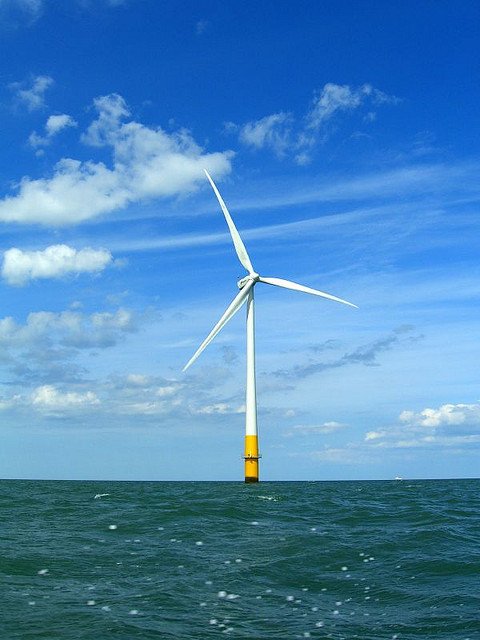The effects of a state committing to offshore wind power at scale and over time, it turns out, are pretty impressive. A new study looks at what enticing the offshore wind industry to take root and flourish on this side of the Atlantic might mean, and suggests that Massachusetts can learn—and benefit—plenty from what Europe has already learned and done, to great effect. All it takes is foresight and commitment.

Credit: phault
The new analysis, the Massachusetts Offshore Wind Future Cost Study from the Special Initiative on Offshore Wind (SIOW) at the University of Delaware, studied the possible effects of an idea kicking around the Massachusetts legislature: requiring local utilities to commit to buying the output from a combined 2,000 megawatts (MW) of offshore wind by 2030.
The idea is that if we build the right policy/market environment, the industry will feel confident about setting up shop in and for Massachusetts.
Then great things can happen. Offshore wind developers will see the Bay State as an attractive place to gear up for offshore wind component manufacturing, project development, operations, maintenance, and more. As someone put it at the recent U.S. Offshore Wind Leadership Conference I attended, this will about attracting not just jobs, but careers.
Falling costs, rising prospects
And, really importantly, the costs will come down—possibly pretty impressively. The SIOW study drew on experience in Europe, the world leader on offshore wind, European projections, and confidential info extracted directly from the industry members who will be the pioneers of the U.S. offshore wind industry. That includes the three wind developers who have already won competitive leases for waters south of Massachusetts and Rhode Island.
And, based on that intel, here’s what SIOW found:
…that costs will be far lower than previously contracted prices for offshore wind in the New England region and that costs will continuously lower throughout a buildout during the decade, due to ongoing technology and industry advances and the effects of making a Massachusetts market visible to the industry.
In fact, the SIOW team projects drops in costs of as much as 55%. That, the authors say, is enough to “put offshore wind on a clear path to deliver clean power at competitive prices for millions of ratepayers in the Boston area and beyond, and make the renewable resource a key contributor to the state’s clean energy future.”

How low can you go? What Massachusetts’s offshore wind projects might cost, relative to European targets and recent European experience. (Credit: SIOW)
How to make offshore wind happen
The key is visibility. Not the visibility of the offshore wind turbines, since those, beautiful as many of us find them, will mostly be too far out to be seen from the coast. But the policy visibility. Will developers be able to know that Massachusetts, and the region, are in it for the long haul, not just one-off projects?
And the key to that is the pitch about 2,000 MW—a number that at first blush seems pretty high, but is really important. For the offshore wind industry to do what we very much want them to do, they need clear signals.
Those 2,000 MW would be multiple tranches, built over most of a decade. Mechanisms, operations, even equipment (think big ships) would get built because industry and investors would be able to see their way through project after project, in Massachusetts and in other Eastern states that followed the Bay State’s lead.
This approach might be thought of as the “go big or go home” strategy—though, given the potential importance of offshore wind for addressing climate change, and the many coastal communities threatened by rising sea levels, it might properly be thought of as “go big so you can go home.”
Here’s what the lead author of the study, noted offshore wind expert Dr. Willett Kempton of the University of Delaware, said on this topic:
The key… is making a firm commitment to scale so the market can do its work. By providing market visibility – the State’s commitment to a pipeline of projects over a set period – the offshore wind industry in the U.S. can deliver energy costs on the kind of downward trajectory seen in Europe.
More than 10 GW of offshore wind energy has been built in Europe and powers nearly 7 million homes. The U.S. has an opportunity to take advantage of this domestic clean energy resource which is in such abundant supply.
As Peter Shattuck and Amy Boyd of the Acadia Center recently put it, this kind of commitment “would place Massachusetts in the slip-stream of declining costs…” that Europe has been achieving.
Getting there from here
The policy push is underway in Massachusetts, and construction has begun off Rhode Island. And the recent offshore wind conference in Boston was full of energy (no pun intended).
What the new SIOW study suggests is that right now, right here, represents a great opportunity to kick start a virtuous cycle of technology, a market/need, and forward-thinking policy to make sure that lots of offshore wind technology comes to the U.S., for good, and for our good.
